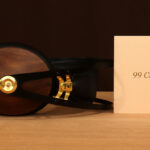Blog
Meze Audio 99 Classics 2nd Generation Review — Headfonics

Louis reviews the Meze Audio 99 Classics 2nd Generation, a refined rebirth of the company’s iconic 40mm dynamic driver closed-back headphones. It is currently priced at $349.
Disclaimer: This sample was sent to me in exchange for my honest opinion. Headfonics is an independent website with no affiliate links or status. I thank Meze Audio for their support.
You can click here to learn more about Meze Audio products previously reviewed on Headfonics.
This article follows our current scoring guidelines, which you can read in more detail here.
Meze Audio surprised me when they told us that they were introducing a second version of their popular 99 Classics headphone. I wasn’t expecting that. It’s a headphone that most have heard of and owned. I’ve had a pair for some years now.
The closed-back headphone design is one that most people set aside because they don’t have listening conditions like noisy areas or a peeved companion that gets annoyed by sound leaking from the back of your headphones.
If you need isolation, the closed-back headphone is a good solution. Unfortunately, they carry a bad reputation, and most people are not willing to compromise fidelity for the sake of isolation and prefer the open-back design.
But here, nonetheless, is a good-sounding closed-back and a model that has stood the test of time. But now, it’s been tweaked with ten refinements, making this launch even more intriguing than the original.
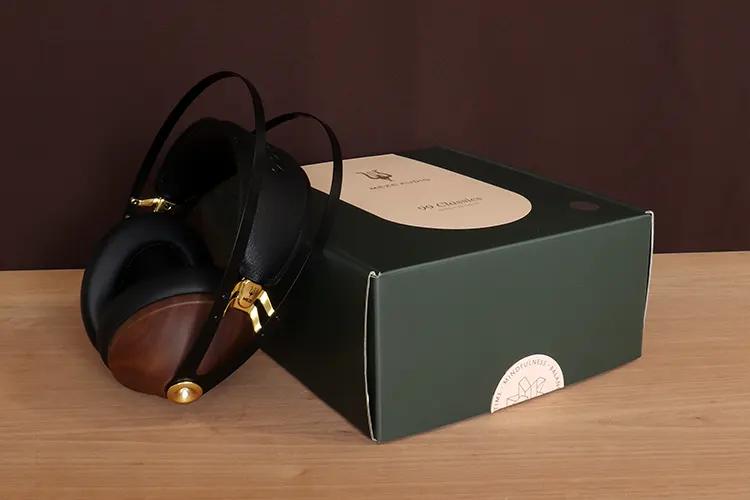

Features
On the surface, the Meze Audio 99 Classics 2nd Generation looks almost identical to the original model. There aren’t many new implementations to look at here. I do see a new style ported headphone connection on each cup, but that’s it.
It looks as though Meze Audio reworked the cups to improve sonics and also gave us an updated driver. The cups are larger in size, and I’m pretty sure the driver was tweaked as well because it lists different specifications, particularly with impedance.
The size of the driver remains 40mm, and it’s a dynamic type with a reported frequency response of 15Hz to 25kHz.
The driver impedance went from 32Ω to 16Ω on this version, making this model easier to drive compared to the original model. The driver’s efficiency rating stayed the same at 103 dB/mW.
Meze Audio used a new technique of matching up drivers that was implemented on this model. This driver matching technique improves staging accuracy, and this model surpasses the older 99’s capabilities. On top of that, Meze Audio also improved acoustic cup sealing in key areas.
Another feature is a simple but effective set of acoustic foam inserts that change the sonic profile of the 99 Classics 2nd Generation to a point that they might have to stay on because I’m liking their effect on the overall tonality.
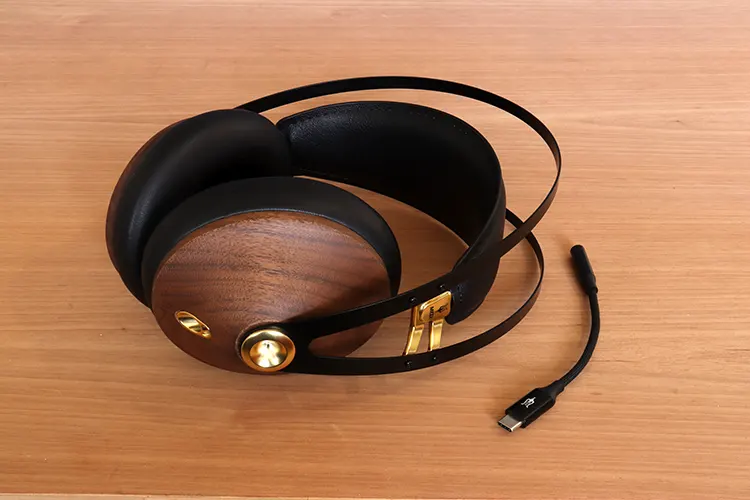

Meze Audio Dongle
There is one included feature that I have to mention separately here that was not included with the original model.
The 99 Classics 2nd Generation comes with a Meze Audio branded in-line dongle, one in the likes of FiiO’s JIEZI B, their JA11, Periodic Audio’s Rhodium, the NeXTDrive Spectra X, and the Zorloo Ztella, to name some.
Meze Audio doesn’t list specifications or any information on this dongle, but to me, it performs on par with and is a competitor to those mentioned above. What’s more impressive is that it’s able to drive the 99 Classics 2nd Generation well enough.
The dongles mentioned above can cost up to $100, and this freebee inclusion not only makes the 99 Classics 2nd Generation more usable out of the box but also adds value to the overall package.
It displays a Meze Audio logo on the USB-C input connector, and the opposite side of the dongle uses a 3.5mm input jack. All the hardware seems to be made of metal, and the cable is cloth-wrapped. Small rubber strain reliefs finish off the overall construction.
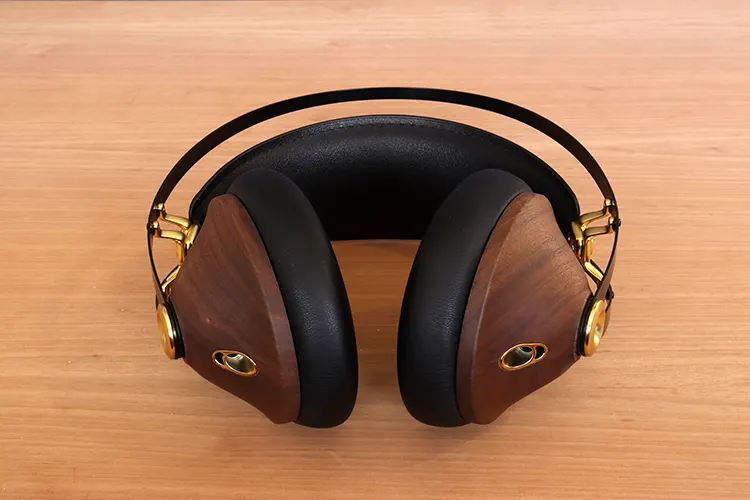

Design
The Meze Audio 99 Classics 2nd Generation keeps the Classics Walnut cups, which, according to Meze Audio, take 45 days to complete. Their production involves a process of CNC shaping, sanding, lacquering, final finishing, and inspection.
No two cups are alike since they’re hand-made from real walnut. But the differences between version 1 and the 2nd Generation are scarce. It’s going to challenge the senses when it comes time to distinguish the two from each other. I would look at those input connectors for some distinction.
Meze Audio kept the ambidextrous design, so there is no left or right side on these headphones. That is determined by which side of the cable the cup receives as input.
All the metal parts of the headband are still made from cast zinc and then electroplated. The original 99 Classics came in two electroplating schemes: silver and gold.
For now, it looks as if the 99 Classics 2nd Generation will be available in gold, but I have a feeling both variants will become available soon.


Stock Pads
The 99 Classics 2nd Generation pads were modified from the originals. The mounting method changed, but the pad itself seems to be almost the same, almost.
It’s still made with soft pleather and soft foam. Their shape remains oval, identical to the original, but they’re slightly larger by a few millimeters.
The previous version had a slit around the cup that the pad went over and into. I like that system because it has made it easier to find replacement pads. You now need to get the original pads, which are easier to replace, but they have to include that ring.
The major change is that the pads are now mounted on a 6-point clip-on system that you have to pull off instead of sliding off. Good thing I stopped pulling on them and read the manual when I initially attempted to remove them.
This implementation has pros and cons. It makes it easier to install and remove the pads, and they remain fixed in position, yes, but it adds bulk to the pads.
There’s a fat foam pad at the opening of the pad that I assume is part of the tuning implementation and is another reason I recommend sticking with the stock pads in this case, unless you’re sonically adventurous.


Comfort & Isolation
The self-adjusting headband designed by Meze Audio remains, and it’s comfortable and durable, and has stood the test of time on my set. The padded headband helps to evenly apply pressure on top and adds comfort.
The clamping force is not too bad either on the 99 Classics 2nd Generation. They slightly hug your head and also pull upwards due to the spring action of the self-adjusting headstrap, especially if you have a large dome. But that’s fine because I prefer my ears to sit at the bottom of the pad on these cans anyway.
One thing that caught my attention is that manufacturers usually attempt to lower the overall weight concerned about comfort issues. On this revision, the weight increased from 260g to 290g.
I bet those pad rings that were not present on version 1 have something to do with the extra 30g, since it involves the extra weight of the ring weight plus the glue. Or perhaps the larger cups are the culprit. But to be honest here, the weight difference is not noted much and of no consequence.
Also expect good isolation and a minimum amount of bleed-out from the 99 Classics 2nd Generation. These are excellent for use in noisy environments or when you need to zone out.
They also work in those cases previously mentioned where someone nearby is prone to be annoyed by sound leakage.


Stock Cable
The 99 Classics 2nd Generation stock cable is a six-footer, Kevlar OFC, and it’s a pretty nice cable that uses dual cloth-wrapped cables that are twisted up to the Y split.
The 3.5mm termination and the Y split are made from anodized metal and are rather nice. Even the 3.5mm terminals on top are nice.
But the nice bits end there because the two top cables are thin and rubber-insulated. As it stands, it’s a good cable because it works and doesn’t look as if it will degrade quickly.
But it could have been great if the two top cables were cloth wrapped as the two bottom cables, and that construction-wise would have brought some balance to the overall construction of this cable and taken it to another level. The tips are gold-plated and all, why not go the extra step?
The input side plug is a bit chubby, but it does have an elevated tip to accommodate mobile phone cases. I like the cable overall because it seems well thought out, except for that one part of the assembly.
One good point I have to mention as well is that 99 Classics 2nd Generation uses the popular 3.5mm tip positive and negative sleeve wiring scheme on the cup wiring, so the aftermarket, exotic cable market offers plenty of alternatives. Meze Audio also offers some upgraded cables of their own, in case you didn’t know.
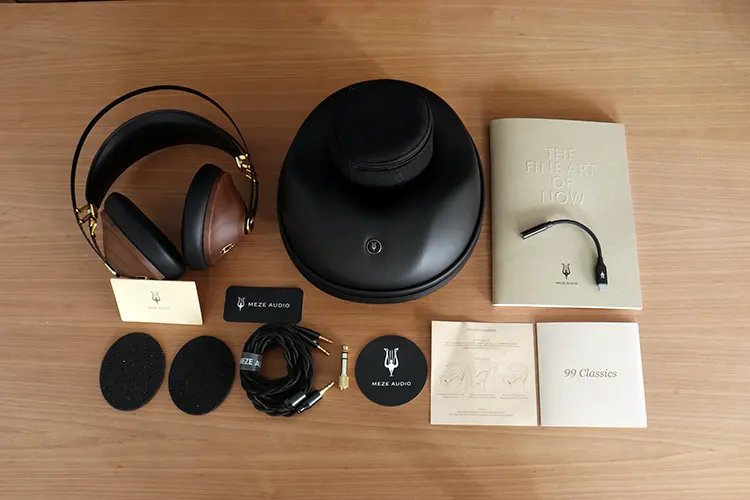

Packaging & Accessories
The box the new 99 Classics 2nd Generation comes in has changed and has been simplified. The original box was made with thicker cardboard and displayed better lamination. But the contents are more generous this time around.
You get the same semi-hard case, the longer cable, and some literature. One is a product brochure, and the other is a small product manual. The two inserts also come in the box, as well as the cable assembly and a small case to store the cable in, and some accessories.
What surprised me was to find that USB-C dongle inside the box alongside the stock cable, which makes this set ready to use out of the box, as they say. All you need is a mobile device.
Sound Impressions
I wanted to get a real-world feel for the 99 Classics 2nd Generation. So I used sources that are low powered, medium powered, and a high-power setup to see how they would upscale.
I not only used Meze Audio’s supplied dongle fed by my Motorola Edge running Android 15, and my custom PC, but I also used the Rose Technics RT-5000, the Topping DX5 II, and the NiPO A100. The high-powered setup was composed of the SMSL SU-X and SH-X combo.
Summary
Meze Audio tuned the 99 Classics 2nd Generation to sound neutral and more open and forward than one would expect from a closed back with such narrow cups. They’re quite perplexing.
The one aspect that has intrigued me is the fact that once I put them on, I wanted to keep them on and went on a 5-hour listening spree on day one. That was because these bring to the table what I call “fun factor”.
I have no curves to go by since this headphone was just released, but after running a tone generator sweep, I found that the bass has a dip below 30Hz and is almost ineffective below 20Hz. Bass is more mid-bass centric than sub-bass extension.
Going up the scale, there’s a small bump around 2.5kHz that gives the midrange a vivid character because the bump is a few decibels off the flat line and increases output in that area.
My set also had a dip in the 4kHz range that relaxes that area. From that point upwards, there are few peaks or dips to talk about, or none that are significant.
But overall, there seems to be lots of balance here, staging capability, with a top-end reach that is rather lean but clean, and quite pleasant, along with a punchy midbass.
It’s a fun tuning that can also accept equalization with little to no degradation or breakup, particularly in that lower region.
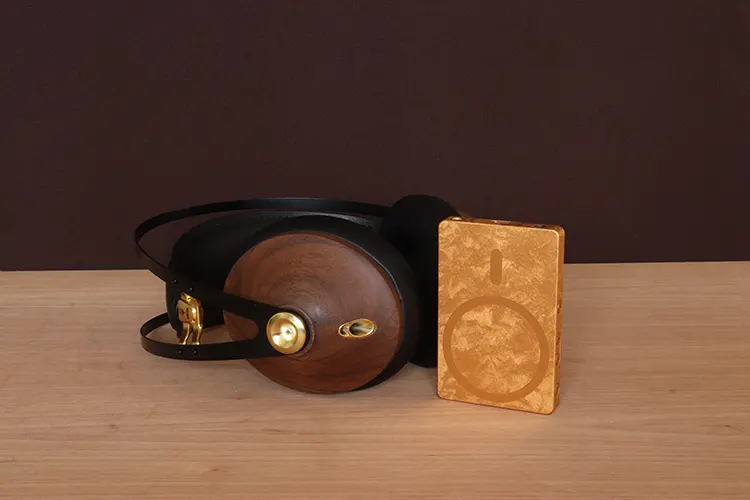

Bass
The 99 Classics 2nd Generation does bass nicely. The bass curve appears to be flat until it reaches 25 Hz, at which point it decreases in volume. This tuning appears to be a deliberate one, as I experienced a lot of clean bass with no overexertion.
It’s a relaxed tuning that produces solid bass notes, but at times I prefer these headphones with the help of an equalizer to boost the bass frequencies around 3 decibels because the bass slam capability is there, but you have to help them along.
I would only consider the 99 Classics 2nd Generation for EDM and heavy bass-noted music if you’re willing to do some extra work and apply a small boost below 40 Hz, since this set is more prominent in midbass and not so much in the bottom octave.
The 99 Classics 2nd Generation has not employed a heavy bass tuning, but rather, contrary to the original version, which was a bit bass-emphatic.
However, I did notice an increase in bass when the driver gets closer to the ear. This effect can be obtained by pressing the cups closer to your face, or perhaps it will happen naturally when the pads start to wear down.
Midrange
That small hump previously mentioned, in combination with the dip in the area that can become strident on some headphones, makes the 99 Classics 2nd Generation comfortable to listen to for long periods.
The midrange has an upfront presence that makes vocals sound up close and intimate. Midrange tonality is realistic and inviting since there’s no stridency above the 2.5kHz mark. Everything comes across smoothly but with immediacy and a touch of forwardness.
I like the way choruses are distinct and instruments are also isolated from each other. I wouldn’t consider these for monitoring, but the midrange is revealing of recording qualities.
These do manage to sound interesting. Even some YouTube videos can sound interestingly good on these.
Most will enjoy the natural timbre and vividness of the midrange in this set, but I did notice a small lack in microdetail presence, which, in some cases, is present, but it tends to take a back seat.
The 99 Classics 2nd Generation portrays a musical aspect in the midrange and in general, which makes this set fun to listen to, and they veer from being too strident or analytically sounding.
It’s an engaging-sounding set that reels you into the music and stays away from making you feel like listening to music is laborious.


Treble
Meze Audio has its tuning down. They know how to tune so you get just the right amount of treble energy without going into sibilance or excessive territory.
The 99 Classics 2nd Generation treble response here is pronounced but not subjugating. There’s a relaxing element here in that the tuning is done refreshingly because there seems to be an absence of peaks above the 3kHz mark all the way past 10kHz.
Perhaps some will desire more high-frequency definition from the top end, but at this price point, it will be hard to beat these in high-frequency production.
The high frequencies here lean to the dark side, but every so often, and when needed, they produce sparkle and vibrance. Although high-frequency extension is not stellar, they manage to produce highs that are free from sounding piercing or too hot in exchange.
Staging & Dynamics
The most noted aspect of the 99 Classics 2nd Generation’s soundstage is the amount of perceived height. Andy Shauff’s “Begin Again” shows off lots of it at the end bar climaxes. The 99 Classics 2nd Generation gives the song height beyond the top of the head.
I also like the way the 99 Classics 2nd Generation blends in certain elements into the front stage position while simultaneously producing notes above the ear line and sometimes across the visual line.
They don’t reach too far out sideways and tend to produce a soundstage that is more intimate than anything else. You can compare the overall size of their soundstage to comparable of a large room performance.
Click on page 2 below for my recommended pairings and selected comparisons.

